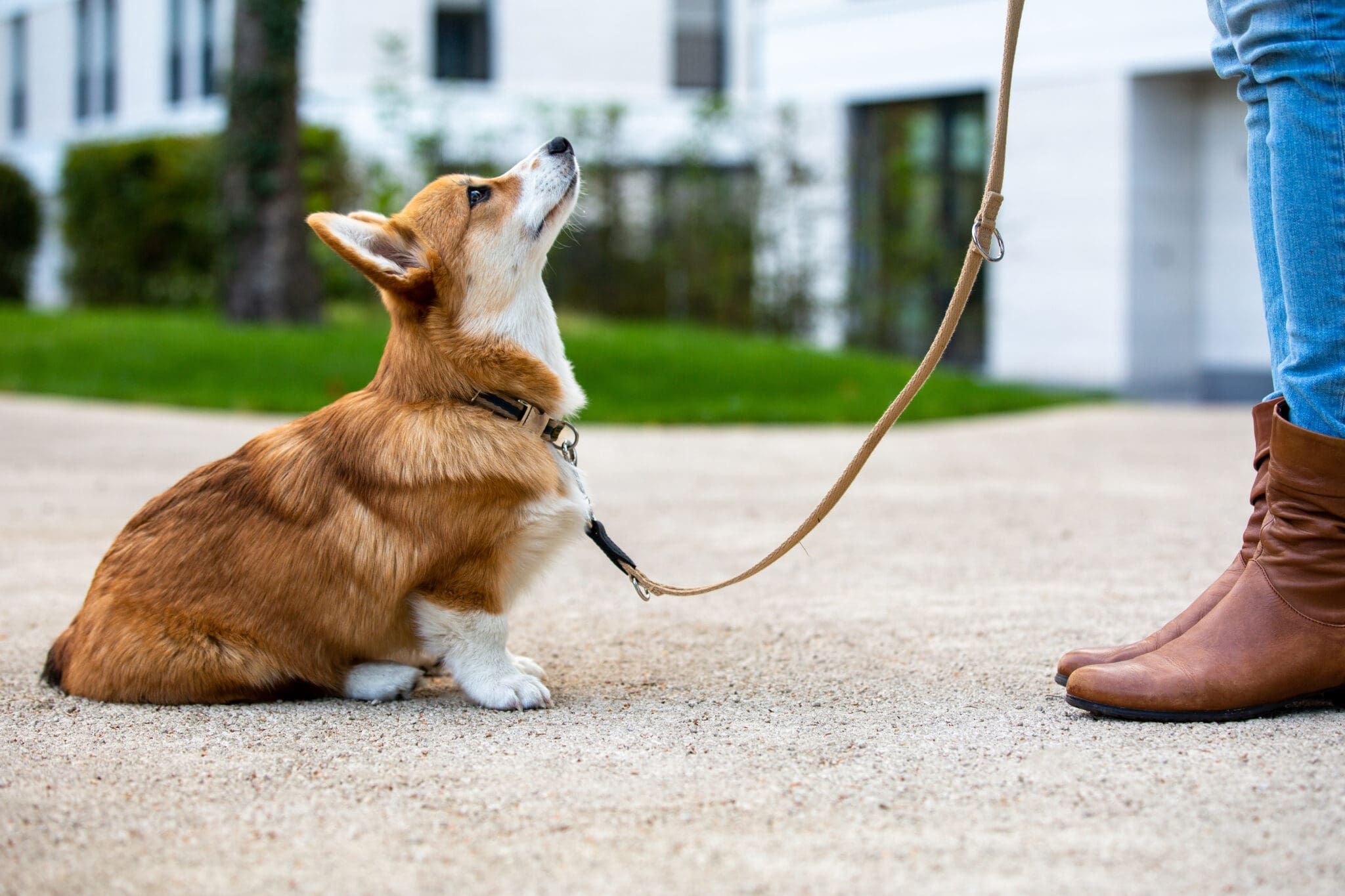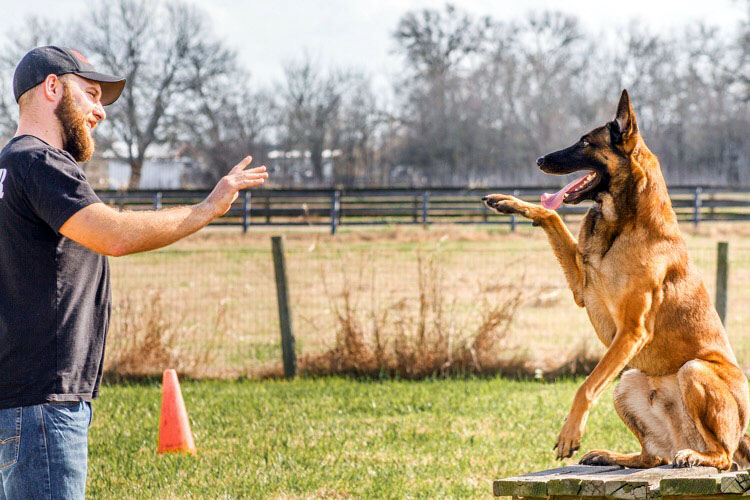Top Strategies for Effective Dog Training Techniques Every Pet Owner Should Know
Novice's Guide to Successful Pet Dog Training in the house
Effectively training a dog at home needs a nuanced understanding of canine habits and effective communication techniques. Establishing clear training goals, making use of high-grade incentives, and keeping uniformity throughout family participants are essential aspects. Integrating training right into everyday routines can improve both interaction and retention.
Comprehending Pet Dog Habits
Comprehending canine habits is vital for efficient training and fostering a harmonious relationship in between humans and their canine friends. Pets interact mostly with body language, vocalizations, and faces, making it important for owners to translate these signals precisely. Acknowledging habits such as tail wagging, growling, or shrinking can supply insights right into a canine's mood and intents.

Typical behavioral problems, such as aggressiveness, stress and anxiety, or too much barking, usually stem from misunderstandings or unmet demands. Observing and dealing with these problems promptly can stop rise and guarantee a favorable training experience. By cultivating a deep understanding of dog actions, owners can tailor their training techniques to suit their canine buddies, eventually bring about a pleased and well-behaved pet dog.
Vital Educating Tools
A well-equipped training area can substantially boost the effectiveness of dog training in your home. Important training devices make certain that both the instructor and the pet dog can participate in productive sessions that promote knowing and bonding.

Spending in a strong chain and a comfortable, well-fitting collar or harness is important for safety and control. These devices aid establish boundaries and ensure the pet stays secure throughout training. Furthermore, a marked training location, without disturbances, help concentration for both the trainer and the pet.
Training help such as training pads, cones, or agility devices can additionally improve the experience by introducing range and obstacles. Finally, having a note pad or electronic application for tracking progression can be very useful, allowing you to keep in mind successes and areas for enhancement. Utilizing these crucial tools will create a favorable training setting and lay the structure for efficient understanding.
Creating a Training Routine
Establishing a constant training regimen is essential for efficient dog training in the house. A well-structured routine not just helps in reinforcing desired behaviors yet additionally offers your pet dog with a complacency why not try this out and predictability. To create an effective training regular, begin by identifying particular training objectives, such as fundamental commands, chain walking, or house-breaking.
Pick an assigned time daily for training sessions, preferably when your dog is receptive and alert. Procedure ought to be short, approximately 5 to 15 mins, to maintain focus and stop fatigue. Consistency in timing and atmosphere will improve your pet's knowing experience.
Incorporate training into everyday activities to strengthen skills. Practice commands during walks or mealtime, which incorporates finding out right into natural regimens. Furthermore, continue to be versatile and readjust the regular as necessary, suiting your dog's energy levels and mood.
Positive Reinforcement Strategies
Positive support strategies are basic to efficient pet dog training, promoting preferred behaviors through rewards instead of penalty. This method makes use of favorable stimuli, such as treats, appreciation, or playtime, to encourage dogs to duplicate details actions. The keystone of this technique is timing; incentives need to be given quickly complying with the preferred habits to create a clear association.
When executing positive support, it is necessary to pick benefits that are encouraging for your pet dog. High-value treats, such as little items of poultry or cheese, can be particularly reliable during training sessions. Additionally, differing the incentives can keep your pet dog's interest and excitement.
Start with easy commands, like "rest" or "remain," and slowly progress to much more complex tasks. Consistency is vital; guarantee that all member of the family make use of the same commands and incentive systems to stay clear of complication.
Additionally, it is important to remain individual and avoid aggravation. Dogs, like human beings, discover at their own speed. By fostering a helpful training atmosphere via positive support, you can improve your canine's knowing experience while reinforcing the bond between you and your hairy friend, laying the foundation for successful training results.
Common Educating Challenges
While educating a dog in your home can be a fulfilling experience, it usually features a set of usual obstacles that can check both patience and uniformity. One common concern is disturbance. Pets may end up being conveniently averted by noises, motions, or perhaps scents in their setting, making it challenging to keep their emphasis during training sessions.
Another challenge is disparity in commands and reinforcement. If relative make use of various hints or benefits, it can perplex the dog and impede progress. Developing a unified web strategy is crucial for reliable interaction.
Furthermore, dogs can experience aggravation or tension, particularly if they do not understand what is anticipated of them. This can bring about unfavorable habits, such as eating or barking.
Lastly, the timing of support is critical (Dog training). Postponed benefits can reduce the performance of favorable support, as dogs may fail to attach the actions with the reward
Getting rid of these obstacles needs commitment, clear communication, and a structured training strategy. Recognizing and dealing with these common challenges will lead the way for a much more satisfying and effective training experience in the house.
Conclusion
In verdict, effective dog training at home requires a thorough understanding of canine actions and effective communication approaches. By developing clear training goals and using top notch deals with alongside positive support, the training process ends up being much more fulfilling for both the trainer and the pet. Versatility, consistency, and perseverance are essential parts that promote understanding. Inevitably, incorporating training right into day-to-day regimens enhances the bond in between canine and proprietor, making the experience both efficient and pleasurable.
Establishing a regular training routine is essential for efficient canine training at home.Positive support techniques are essential to efficient dog training, promoting desired behaviors with benefits instead than punishment (Dog training). By promoting a supportive training environment with favorable reinforcement, you can improve your pet's understanding experience while strengthening the bond in between you and your hairy buddy, laying the groundwork for effective training outcomes
In final thought, effective dog training at home demands a thorough understanding of canine habits and effective communication methods. By establishing clear training objectives and making use of top quality deals with together with positive reinforcement, the training process comes to be a lot more rewarding for both the dog and check that the trainer.